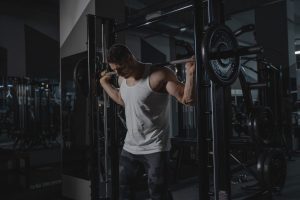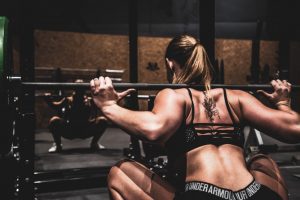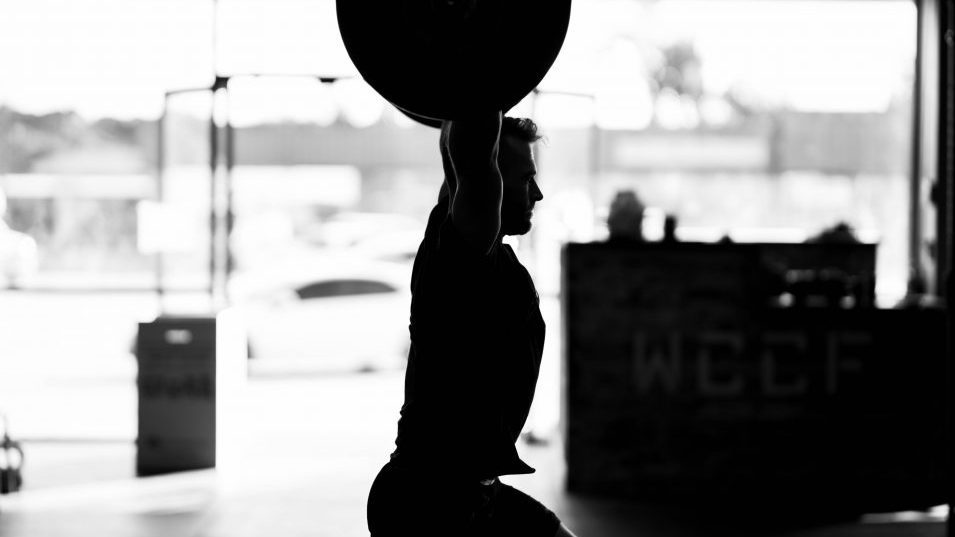When lifting weights there can be a stigma that it is done by people that want to become extremely muscular human beings and lift as much weight as possible. There is a big macho mentality that circles around what it is to go to the gym. Just because you lift weights doesn’t mean you are going to become massively muscular. Sure, this can be the goal for some people but isn’t the only reason for lifting weights.
The real benefits of lifting weights are the long-term effects.
Building muscle and strength allows you to perform tasks of daily living and be able to participate in hobbies with less impact on the body. If you have the strength and resilience in your body to perform lifts that are harder than what you do every day then it gives you a buffer for the simple tasks that you have to do to go through life. These are activities like sitting down and getting out of a chair, being able to kneel and get back up, moving furniture, picking up your kids, going on walks/runs, etc.
A lot of the time as we age we get hurt doing regular everyday things repetitively over time. If we consistently work on strength in the gym, then these things become easier and don’t take as much effort. Think of it as creating an extra layer of armor in your joints and muscles that protect you from getting hurt. Also, your endurance naturally goes up as you build it in the gym. This gives you the ability to go on walks, get through work, and play catch or basketball with your kids.
It isn’t just about being “healthy”, it is about being able to do the things you have to and want to do over your lifespan.

The older we get the more muscle wasting occurs. After the age of 50, we lose about 30% of our muscle mass over the next 20-30 years. Going into these years with good, lean muscle tissue prevents the amount of breakdown of this muscle and allows you to stay strong and active into your later years. The years after we retire we have all the time we could want to do anything we put our minds to. Why not have the strength, energy, and motivation to do those things? You could explore the world and not be in pain or slowed by aches, pains and weakness. You can play with our grandkids without being afraid of getting hurt. You don’t have to rely on your family members for physical help when there are things to do during your day. Consider these things when trying to find the motivation to go to the gym.
If you are not training for a competition in the near future, think of the goals you want to achieve with your workouts. Are you doing it for hypertrophy, strength, aesthetics, or do you do it because you want to be able to get out of your chair and walk a mile when you are 80?
This brings up the topic of intensity and volume of training. You want to put your body through enough intensity to make physical changes in strength and muscle building but not get hurt. The biggest things that can get a person hurt are volume/intensity and form. You must match your volume of lifting (sets and reps over the week), intensity( % of 1 rep max or Rate of Perceived Exertion), and form ( body positioning as you perform lifts) with your goals. If you are training for longevity, you don’t have to push yourself to the absolute limits and risk injury. You can pick a weight that is relatively difficult, that you can lift with good form, and do for about 8-12 reps. These rep ranges are good for both strength and endurance training of your muscles. If you have the goal of maximum muscle mass gain or maximum strength gains then pushing the intensity and volume of lifting is necessary. Even though the risk is higher for injury it can still be done safely with the right programming. Again, this is not how it has to be done by everyone.
The two main lifts that are recommended for longevity are squatting and deadlifting.

These two lifts are going to work most of your body, especially the lower body which is the most important for walking, negotiating stairs, and getting up and down from surfaces. These lifts don’t necessarily need to be done with a barbell to build strength and resilience. You can use kettlebells or dumbbells as well. Again, you don’t have to use so much weight that you truly struggle and feel like you are putting your body in danger. The weight shouldn’t feel effortless as you do the lifts, but hard enough that you feel like you did a good amount of work at the end of 8-12 reps. You should feel like you have a few reps left in the tank to avoid excessive stress on your joints. Outside of squatting and deadlifting, machines and free weights to isolate muscles are great as well. It is good to do a combination of both compound movements and isolation work to make sure you are balanced throughout your body as well as not overwork yourself only doing compound movements. They both work together and complement each other.
Lifting weights is for the long game.
Next time you think about going to the gym, think about how you want to feel 30-50 years from now. Be careful as you lift weights as it could affect you negatively in the future if done wrong for long periods of time. There is only so much time it can be done improperly before something gives, not for just the next few months of training. Do it properly and reap the benefits as you age into your 60, the 70s, and 80s.
About the author:

Dennis was born and raised in Cincinnati and went to the University of Cincinnati for health promotion and education, focusing on fitness for his undergraduate degree. Following completion of his undergraduate studies, he then went on to the University of Dayton and received his Doctorate of Physical Therapy.
Dr. Mirosh has been practicing in outpatient orthopedics since graduating from UD treating a variety of physical ailments from musculoskeletal injuries to strokes and deconditioning. He has a true passion for working with any client that has the drive to better themselves but has a special interest in working with athletes. In particular, he enjoys working with weight lifters and martial artists
He has always loved the medical field and was directed towards physical therapy from the time he was in middle school. He has been around sports his whole life and had a high appreciation for rehabilitative medicine.
He loves being able to go in every day and help people in his community better their lives and allow them to return to the activities that they hold dear. He enjoys educating clients on proper movement and how to optimize their performance in their everyday life and hobbies. He was also is very blessed to be able to use his hands to alleviate pain and allow people to get back to doing the things they love.

